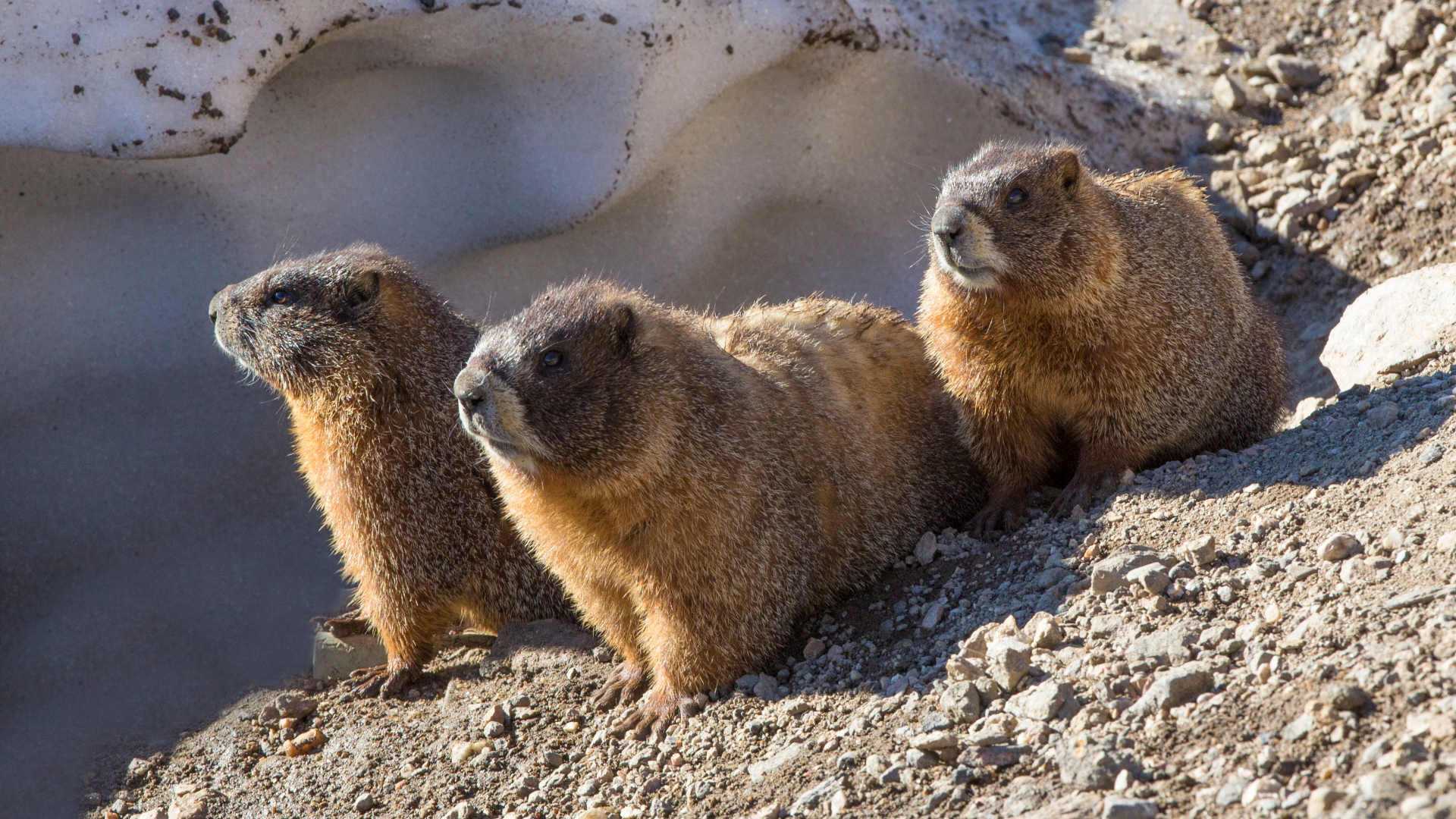In the summer of 1919, John Johnson, a biology professor at what was then known as Western State College, headed off to do some fieldwork at a site near Gothic, Colorado, an abandoned silver mining town that sits in the Rockies at an elevation close to 10,000 feet. Johnson was struck by the diverse ecosystem, and soon he was bringing students there for field courses. Less than a decade later, in 1928, the Rocky Mountain Biological Laboratory was born; today it’s a 70-building complex that justifiably boasts that it hosts “one of the largest annual migrations of field biologists in the world.” Until recently, researchers and students would stay in old mining cabins and other older housing units, but with support from the National Science Foundation, more modern housing is now available.

The accompanying article is excerpted and adapted with permission from “The Well-Connected Animal: Social Networks and the Wondrous Complexity of Animal Societies” by Lee Alan Dugatkin, published by The University of Chicago Press. © 2024 by Lee Alan Dugatkin. All rights reserved.
In addition to all those humans, the Rocky Mountain Biological Laboratory is also host to many yellow-bellied marmots, a cat-size rodent in the squirrel family. These animals are a dream come true for an animal behaviorist. Marmots are out and about during the day, they reside in easy-to-find burrows, and have a yearly cycle of winter hibernation and wakefulness that maps nicely onto the academic calendar. For the last two decades, the Rocky Mountain Biological Laboratory has been biologist Dan Blumstein’s second home and the yellow-bellied marmots his second family. Marmots live in smallish colonies comprised primarily of matrilineal groups — females and their genetic relatives— plus one or two males, and Blumstein and an army of collaborators have been poking and probing the marmot social system.
To sort out who’s who, every marmot in the populations under study has a metal earring with an identification tag, as well as a temporary dye mark applied to its fur. When marmots wake up from hibernation, Blumstein and his team jump onto their skis and census the area, looking for animals emerging from their winter sleep. As the snow melts, they switch from skiing to either walking, biking, or driving. Using binoculars and spotting scopes, the crew perch themselves somewhere between about 60 to 500 feet from the marmots and, using pen and paper, record what they see. They gather data on survival rates across years, as well as on friendly behaviors such as grooming, playing, greeting, sitting together, and social foraging. They also measure hormone levels from feces, blood, and fur samples that they collect during periodic trappings. Days can be long, but marmots can be very cute, and some of them are downright entertaining. Blumstein remembers one male in particular who lived to the age of 11: “Some males are kind of brusque and other males are sweethearts,” Blumstein explained, adding that this one was a sweetheart who was always greeting his mate, a female dubbed 1399. But, “every time he would greet 1399, she would smack him in the nose.”
Yellow-bellied marmots are a dream come true for an animal behaviorist.
Fieldwork goes on seven days a week until about the second week of September, when the marmots call it a year and start slipping into hibernation. During that hibernation, Blumstein and his team are often using social network models to understand life in marmot society. Blumstein’s sortie into social networks started in 2004 with his involvement in a series of workshops at the National Center for Ecological Analysis and Synthesis in Santa Barbara, California. These workshops were all about using evolutionary principles to help with national security matters, what Blumstein and others called “Darwinian homeland security”: A “bunch of ecologists and evolutionary biologists and psychologists and security and defense people and warriors and other very interesting people” is how he describes those attending. As he prepared for the workshop, Blumstein found himself reading more and more articles on terrorism and terrorist networks. It didn’t take long before he was applying network thinking to his marmots.
Blumstein’s thoughts soon turned to marmot network dynamics as they relate to safety against predators. Like other marmots he had studied, some yellow-bellied marmots give off alarm calls when a predator is detected. When others hear that call, they stop what they are doing and look around for danger, sometimes rushing to the safety of a burrow. Not all alarm calls are equal: Some calls are noisier than others, and so likely alert more group mates. Blumstein and his colleague Holly Fuong wanted to know if position in a social network affected who gave off those louder alarm calls.
Every other week, Blumstein and Fuong set out traps near burrows baited with horse food, a marmot favorite. As they transferred the trapped marmot to a canvas bag, they had microphones placed about a foot away and recorded any alarm calls. Then they looked at whether an individual’s position in a network that included many different friendly, as well as aggressive interactions, affected the type of alarm call produced. It did. More socially isolated marmots, who were involved in relatively few social interactions, gave off noisier calls. Blumstein and his colleagues think it may be that socially isolated marmots with few partners they can count on in the face of a putative threat are more easily aroused by danger.
When other marmots hear that call, they stop what they are doing and look around for danger, sometimes rushing to the safety of a burrow.
Network dynamics affect not only how alarms are given, but how listeners respond to them. Though their results were not quite statistically significant, in a separate study, Fuong, Blumstein, and their colleague Elizabeth Palmer had found hints that marmots with many friends and friends of friends began feeding more quickly than others after hearing an alarm call from an unfamiliar individual, perhaps because they feel more secure than marmots who were not as well connected. With an understanding of the power of the social network approach to unravel marmot social life, Blumstein and his team, led this time by Anita Pilar Montero, next turned to networks, predation, and mortality.
Marmot mortality during the summer is almost always the result of predation, and so using data collected between 2002 and 2015, Blumstein’s team mapped summer survival probabilities for both adults and 1-year-olds, or yearlings, onto networks built using all social interactions in that network. While no social network metrics were correlated with summer survival in adults, a telling sex difference appeared between male and female yearlings. For yearling males, none of the network metrics were correlated with summer survival, but yearling females who were central players in their social network were more likely to survive the summer than less-connected peers. Blumstein wanted to know why. In time, he came to think that dispersal behavior may hold the answer.
Leaving a group to try to make it on your own, at least until you find a new group you can join, is dangerous business for a marmot. Despite that, by the end of their yearling summer, almost all males disperse from the groups in which they were born, and that may explain why they invest less heavily in social interactions before they leave. But only about half of yearling females disperse. Blumstein knew that the young females who were more deeply embedded in their network were the ones staying put.
When he pieced together the puzzle, he came to think that well-connected yearling homebody females were opting to avoid the dangers associated with dispersing to start life anew. And it paid off for those females in one of the most important of all evolutionary currencies: survival.
Lee Alan Dugatkin is an animal behaviorist, evolutionary biologist, and historian of science at the University of Louisville who has authored more than 200 papers. His newest book is “The Well-Connected Animal: Social Networks and the Wondrous Complexity of Animal Societies.” He is also the author of “Power in the Wild” and co-author of “How to Tame a Fox (and Build a Dog)” with Lyudmila Trut.










